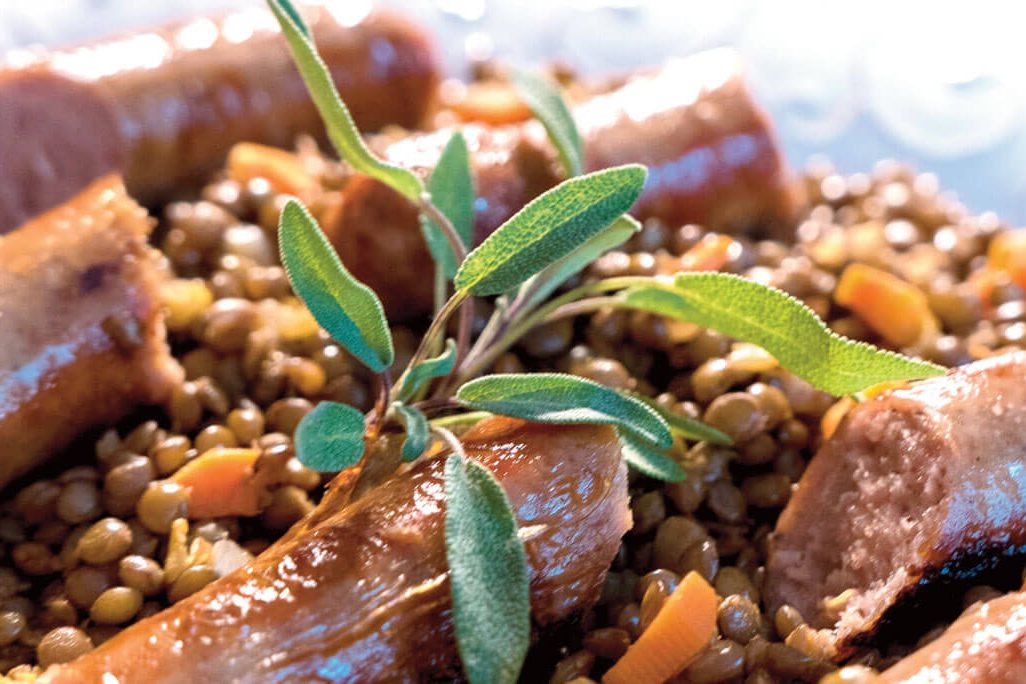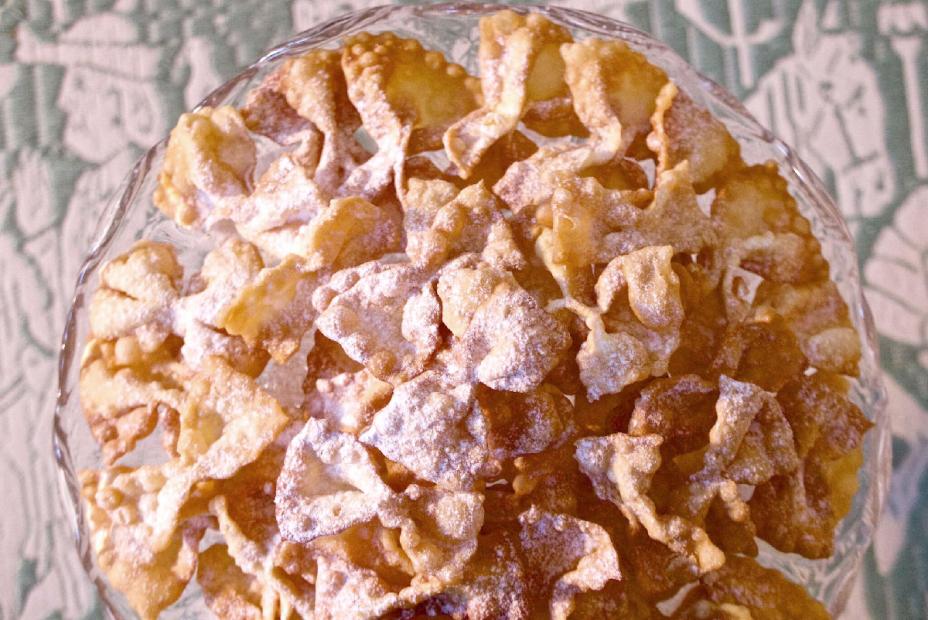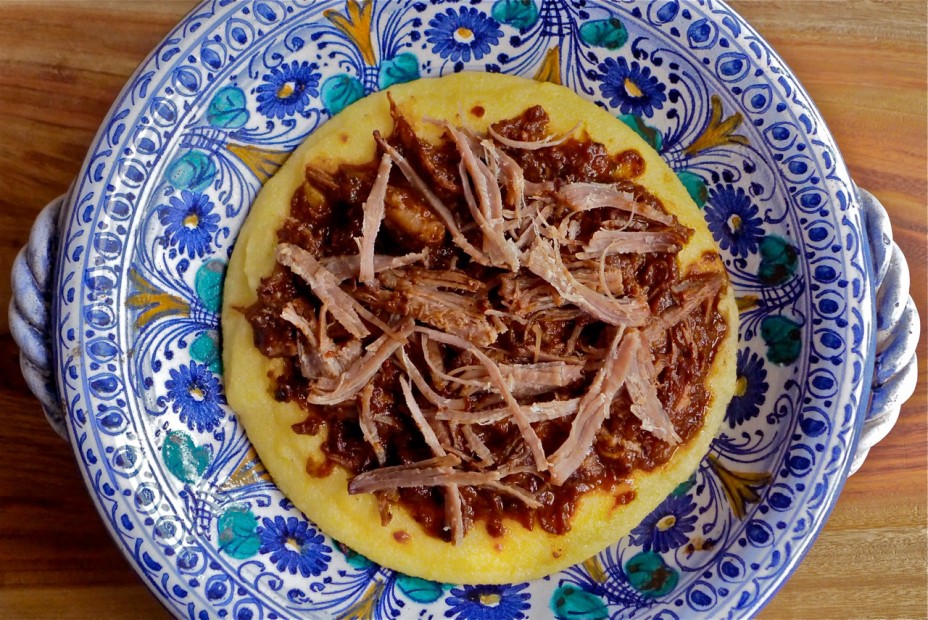Even if the ancient fishing culture of the Venetian lagoon, like most of Italy’s maritime regions, has been forced to give way to importing some of its supply from elsewhere, Venice and seafood are inseparable. How could it be otherwise for a people who live in the middle of the sea, “enclosed between the water and the sky…[in a place] risen as if by miracle out of the water that surrounds it and that like green shining ribbons, cuts through its beautiful body,” in the words of Giulio Lorenzetti in his classic guide, Venice and Its Lagoon.”
The glittering fairy tale is no mere city, but an archipelago of islands that was saved from sinking by a breed of industrious marsh dwellers taking refuge from marauding barbarians 1,500 ago. We can barely grasp how architects could have imagined its plan and how century after century after century, its stones were put into place. Yet there it is, as improbable as it seems, firm and fixed, the vows between La Serenissima and the sea renewed each year in a thousand year-old ceremony when the titular head of Venice, once the Doge, today, the Mayor, blesses a symbolic golden ring and tosses it into the Grand Canal.
If the main island has become a museum (fewer than 30 percent of the resident population is Venetian by birth), there is a Venice within Venice, away from the tourist attractions and the commercial thoroughfares, where the local population lives. The markets of the city are their living colors— Rialto, Chioggia, the Lido, and all the rest — with their golden pumpkin flowers, their violet-streaked artichokes, their scarlet lettuces, their strange and beautiful fish. They sell to the residents and to the islands’ many restaurateurs, shuttling in crops from the lagoon islands and products from the fertile agricultural lands of Veneto provinces. The many assaults to which the city is exposed — the hordes of tourists that empty out onto the narrow cobbled alleys from the massive cruise ships which plague the fragile waterways, the legions of trinket sellers and souvenir kioks, the pricey restaurants with their tourist menus — have, if anything, reinforced the locals’ attachment to things Venetian as a way of protecting themselves from the onslaught. When it comes to matters of food, they are especially ferocious in guarding their treasures.
I will tell you a story about La Serenissima’s true heart.
The place was the Trattoria Antiche Carampane (meaning “trattoria of the old harlots”), a few steps from the Ponte delle Tette, “The Bridge of the Breasts,” so named for the prostitutes who once posed topless in front of their windows in that neighborhood to lure passersby. Here the noble Rampani family once donated some of their holdings to the Republic of Venice in order to establish a district in the city for women who made their living on the streets. One of the buildings bestowed is now home to this charming trattoria, run by the Bortoluzzi family with love and pride. I had arranged to lunch there with two friends, a renowned artist and his costume designer wife who were regular patrons during the six months they lived in Venice each year. The place has long been considered by locals to be one of the city’s best fish restaurants on the island (the proprietor was once in the wholesale fish business), and besides, it permitted them to keep their two dogs, from whom they were inseparable, under the table while they ate. With us was another American friend, a retired symphony conductor of some fame who had bought a palazzo in Perugia where he spent his later years composing music, becoming an accomplished amateur cook, and making a name for himself among members of the opposite sex.
We settled at our table, dogs and all, and asked for menus. The conductor took the lead, as was his habit, asking about every fish and sea creature in the house, how they were cooked, and what wines the establishment would recommend for each. It was determined after consultations with the waiter that it would be a shame not to order the San Pietro, St. Peter’s Fish (John Dory in English). Purportedly named after the patron saint of fishermen, it is among the most prized of the local species for its delicate and tasty white flesh.
The waiter soon returned, carrying a large platter containing a fine specimen of the “sampietro,” roasted whole and beautifully charred, its bright white flesh peeking through the gashes on its skin. It lay on a bed of another local obsession, the scarlet Tardivo radicchio of nearby Treviso, a superior variety for cooking that rarely reaches American markets. The fish was set before him with a certain flourish characteristic of Italian waiters.
“Ah, but the lemon is missing,” exclaimed the maestro.
“Signor,” responded the waiter, “Our fish is fresh. In Venice, we don’t hide stinking fish under the juice of lemons.”
The maestro, no doubt stung by the response, persisted. “I will have lemon all the same,” he commanded.
The waiter refused once again and still the maestro insisted. The news traveled back to the kitchen quickly and fearing that it was about to get ugly in the dining room, the chef came out in his hat and whites.
“There will be no lemon on my fish if you don’t want to insult my restaurant,” he said, settling the matter.
And so it was that I learned never to pair lemon with fish, a habit I haven’t kicked from the day I lunched at the Trattoria Antiche Carampane. Perhaps it is because a photograph of the chef and the waiter along with my two friends and their dogs, taken by the artist in our party shortly after our lunch that day, has hung in a frame on my kitchen wall ever since our eventful lunch. In any case, I haven’t missed it.
Halibut Filets and Radicchio alla Trattoria Antiche Carampane
For 4 people
Here is an adaptation of a recipe from the wonderful Trattoria Antiche Carampane, using halibut in place of Saint Peter’s Fish, and substituting the common globe-shaped radicchio for Tardivo, a variety we are hard pressed to find in American markets. Filets of sole or other white-fleshed fish can be substituted successfully, adjusting the cooking time accordingly. The flavor of the scarlet vegetable, actually a subspecies of the chicory family, sweetens and intensifies when cooked, but its seductive bitterness provides a pleasant counterpoint to the fish. The clear, briny flavor of the fish shines through in contrast.
• 2 heads radicchio, sliced into ¼-inch rounds
• extra-virgin olive oil
• sea salt to taste
• freshly ground black or white pepper
For the fish:
• 1-1/2 pounds halibut filet or steaks, divided into 4 equal portions
• 5 tablespoons fresh white bread crumbs for dredging
• 2 teaspoons fresh snipped chives (optional)
• extra-virgin olive oil
1. Preheat an oven to 400 degrees F. Brush both sizes of the radicchio slices evenly with olive oil. Roast them until they are nicely browned with crispy fringes on both sides, about 20 minutes, flipping them once. Sprinkle with salt to taste while they are hot. Arrange them on serving plates and keep them warm.
2. In a shallow plate, combine the breadcrumbs and the chives, if you are using the herb. Blot the fish pieces well on both sides with clean paper towels.
3. Warm enough olive oil to cover the surface of an ample stick-proof skillet over medium-high heat. The pan should be large enough to accommodate the fish without crowding. Alternatively, you can fry the fish two pieces at a time in two batches. In the meanwhile, be prepared to dredge the fish pieces in the crumbs the moment before the olive oil is shimmering hot; slip them in the oil as soon as it is ready. Sauté them on one side for 4 minutes over medium-high heat, or until the surface is golden-brown. Turn them over immediately and reduce the heat in the pan to medium; cook them on the reverse side for 3 minutes, or up to a minute longer if the pieces are thick. The surface should be nicely colored and the interior cooked through but moist. Take care not to overcook them. Arrange the cooked fish pieces over the roasted radicchio. Scatter with salt and pepper to taste. Serve at once.
Julia della Croce is a food writer and James Beard award-winning cookbook author and recipe developer based in New York. She is presently incubating a book about her family’s ancestral region, Sardegna. Visit her website, www.juliadellacroce.com and blog, http://juliadellacroce.com/forktales1/, connect on Facebook: Julia della Croce – chef & foodwriter, Twitter: @juliadellacroce and Instagram: juliadellacroce.






























